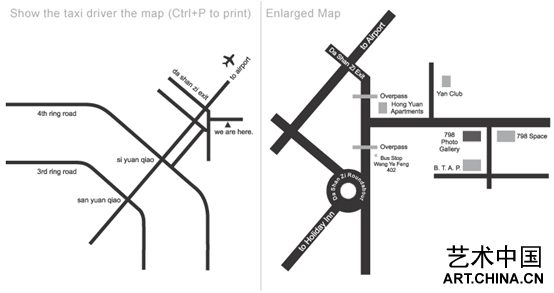|

楊延康攝影作品展 The Photography of Yang Yankang
藏傳佛教Buddhism in Tibet
開幕時間:2008年5月24日15:00
展期:2008年5月24日至2008年6月
電話:010-64381784/64375284
電郵: 798@798photogallery.cn
網址:www.798photogallery.cn
地址:北京朝陽區酒仙橋路4號798工廠內大山子藝術區百年印象攝影畫廊
Opening time: May.24 3:00pm ,2008
Exhibition time:May.24,2008 –Jun. 2008
Tel:8610-64381784/64375284
E-mail:798@798photogallery.cn
Web:www.798photogallery.cn
Add:No4,Jiu xianqiao road,Chao Yang district, BeiJing.
DIRECTION: 798 PHOTO GALLERY
楊延康的視覺信仰
楊小彥
就在楊延康獲得首屆“沙飛攝影獎”的“創作獎”之後,我陪楊延康去中山大學傳播與設計學院給同學做講座。我記得當時的場面,楊延康的圖片在銀幕上出現時,學生的反應是頗為熱烈的,尤其當中那些以苦難為主題的作品,引起了同學們的興趣。在提問時,楊延康談到了對苦難的偏好。在他看來,苦難的意義無疑和信仰密切相關。或者説,正是因為苦難的普遍存在,信仰才具有了永恒的價值。同學們也許不一定能完全理解到楊延康的意思,但是,這些80後的新一代人,當他們果然有機會從自我優越的環境中目睹現實的苦難時,當他們開始通過苦難意識到信仰的意義時,我想楊延康的工作也就找到了一個歸宿,那就是通過苦難去昇華人生。
楊延康進入攝影,本身就是一個傳奇。當然,我不願意把他成功的故事描述為一個盡人皆知的通俗版本。在我看來,支撐著楊延康持續工作的是一種來自內心深處的信念,就像他自己反覆述説的那樣,一種對苦難的特殊“僻好”,一種希望通過對苦難的直視與攝取,來進入人性的深處,從而建構屬於每一個個體,尤其是那些長年生活在不幸與苦難當中的個體的尊嚴。正是這一長遠目標,驅使他從一個苦難走到另一個苦難:麻瘋病人、流浪群體、陜西天主教,和現在整個藏區的底層生存狀態。
我雖然認識楊延康時間很長,但從來沒有和他聊過從事攝影的動機。在我看來,我似乎覺得不需要和他交流這一類的資訊。他的幾大類別的作品和長期的工作已經告訴我,他工作的理由與基點是什麼。
楊延康一拿起相機就自覺加入到紀實的隊伍,這説明他沒有什麼“唯美”的負擔。對他來説,尋找一種純粹的影像感可能更重要。他希望鏡頭有一種穿透力,而這種穿透力顯然來自對象,而不是來自個人的幻想。所以,楊延康一開始就對底層感興趣。但是,直到某一天,他和幾個朋友來到廣東沿海的麻瘋村,我想他才找到了真正的感覺。他所目睹的對象告訴他,什麼叫生存,什麼叫生命,什麼叫忍耐。顯然,是現實的力量而不是別的什麼,讓楊延康的鏡頭變得尖銳了,讓他的影像與尊嚴有了深度的對應。
重要的是,不幸本身通過楊延康的鏡頭走向了終極,那就是信仰。人們的尊嚴是靠信仰來建立的,否則很難想像他們能戰勝生命的脆弱。人們之所以沒有被擊垮,就是因為他們通過信仰獲得了永恒的力量,使他們能夠拋棄苦難而達到平靜。這種力量,楊延康在西北貧窮的農村看到了,他用工作來告訴世人,他所看到的現實,對個人心靈究竟産生了怎樣的震撼。然後,他繼續深入到這令人震撼的現實中。這一回他走向更為遙遠也更為精神性的家園所在,那就是西藏。他繼續在那兒尋找心靈的體驗,尋找尊嚴,尋找信仰。
每天不知有多少人進藏拍照。西藏奇異的自然和族群,可能是全世界熱愛攝影的人們的重要對象,這表明西藏已經成為世界上生産異國情調精神樂團的“幻覺圖像”的原生地。結果是,真實的西藏消失了,真實的西藏人的普通生活,他們的苦難,他們的歡樂,還有他們真正的尊嚴給改寫了。西藏越是吸引人,真實的西藏就離開人們的視線越遠。這是一個奇特的案例,也是吸引楊延康以及和他一樣擁有堅定信仰的人們的根本原因。對楊延康而言,他希望通過自己的紮實工作,還原一個真實的西藏,一個讓人無法回避的、同時有著鐵一樣尊嚴的西藏。
這讓我不期然地想起首屆“沙飛攝影獎”對楊延康獲獎理由的陳述,那段陳述對人們理解楊延康的作品及其背後的價值是有幫助的,也相當精彩地概括了楊延康工作的全部意義。
我明白,其實我們無須對楊延康的影像説太多的話。我相信,人們完全可以從他的影像中發現比語言更重要的內容。一旦人們認識到楊延康在視覺與信仰之間的轉換時,他們一定會和我一樣,發現許多評價會變得多餘。除了體驗,我們真的無須再説什麼。因為,面對信仰,面對由信仰而産生的視覺體驗,本身無法用語言來表述。這時,所有人都會同意,只有作品才是最可靠的載體,讓信仰在其中閃耀。
2008-3-31-廣東東莞
Yang Yankang’s Visual Faith
By Yang Xiaoyan
Shortly after Yang Yankang was awarded the “Prize of Creation” of the 1st “Shafei Photography Award”, I accompanied him to the School of Broadcast and Design of Zhongshan University to give a lecture to the students there. I still remember the enthusiasm from the students when Yang Yankang’s photos appeared on the screen, and those on the subject of misery aroused special interest. In an answer to a question, he talked about his preference for that subject. In his view, the meaning of misery is undoubtedly closely related with faith. Or, in other words, it is because misery exists everywhere that faith is worth eternity. The students might not understand what he said, but when these young people born after 1980 and brought up in a well-off environment have a chance to see misery in reality with their own eyes, and begin to catch the meaning of faith through misery, I think Yang Yankang’s work will reach its destination which is to transcend life through misery.
It is a legend that Yang Yankang entered the realm of photography. I certainly don’t want to tell his success story in a cliche version. In my opinion, what supports Yang’s continuous work is a faith from deep inside, just as he himself has repeated, a special “preference” for misery, a hope to dig into humanity through facing and picturing misery, and to establish a dignity that belongs to each individual, especially to those who live in misfortune and misery for a long time. It is this long-term goal that has pushed him from one misery to another including patients of Hansen’s Disease, wanderers, Shaanxi Catholics, and the grassroots existence of the whole Tibetan area.
Though I have known Yang Yankang for quite a long time, we have never talked about his motivation of becoming a photographer. As I see it, I don’t seem to need to talk with him about such things. The catalogues of his works and long time devotion to photography have told me about the reason and support of his work.
The first time Yang Yankang held up his camera, he joined the realists, which shows that he does not bear the burden of the so-called “aestheticism”. To him, it may be more important to find a pure sense of vision. Therefore, Yang Yankang was interested in the grassroots from the very beginning. However, in my eyes, it was not until one day when he and some of his friends arrived at a village of Hansen’s Disease on the coast of Guangdong Province did he find the “true sense”. What he saw told him what existence is, what life is, and what perseverance is. Obviously, it was the power of reality instead of anything else that sharpened Yang’s lens and enabled his photos to have an exact correspondence with dignity.
What matters is that through Yang’s lens misfortune itself evolves to a terminal: faith. People establish their dignity with faith; otherwise it would be difficult to imagine that they can overcome the fragility of life. They were not defeated because they acquired, through faith, an eternal power that enabled them to abandon misery and reach peace. This power was seen by Yang Yankang in the poverty-struck Northwestern countryside who worked to tell people how stunned a person was by the reality he saw. Afterwards, he went even deeper into this stunning reality, and this time, he went to a remoter spiritual home, Tibet, where he continued to look for soul-experience, dignity, and faith.
There are countless people who go to Tibet to take photos. The fantastic nature and ethnic groups in Tibet may have made it a significant target for photographers all over the world, which means Tibet has become the origin of the “illusion pictures” generated by the world’s exotic spiritual band. The result is that the true Tibet disappeared; the ordinary life of real Tibetans, their misery, their happiness, and their dignity were misportrayed. The more attractive Tibet is, the further it goes from people’s sight. This is a strange case, and it was the fundamental reason for which Yang Yankang and people with the same firm faith were attracted. Yang wants to return a true Tibet, an unavoidable Tibet with iron-like dignity through his work.
This reminds me of the explanation for awarding Yang Yankang on the 1st “Shafei Photography Award” which was a wonderful summary of the whole meaning of Yang’s works and is also helpful for understanding them and their value behind.
I understand that we actually don’t need to say too much about Yang Yankang’s photos. I firmly believe that people can find from his pictures contents that are much more significant than words. Once they realize Yang’s transference between vision and faith, they, like me, will find many comments redundant. We really need not to say anything other than feeling it, because faith, and the visual experience generated from that faith, is beyond words. By then, everyone will agree that only the art works are the most accountable vehicle in which faith can shine.
Prologue is as above.
Dongguan, Guangdong
March 31, 2008

|

